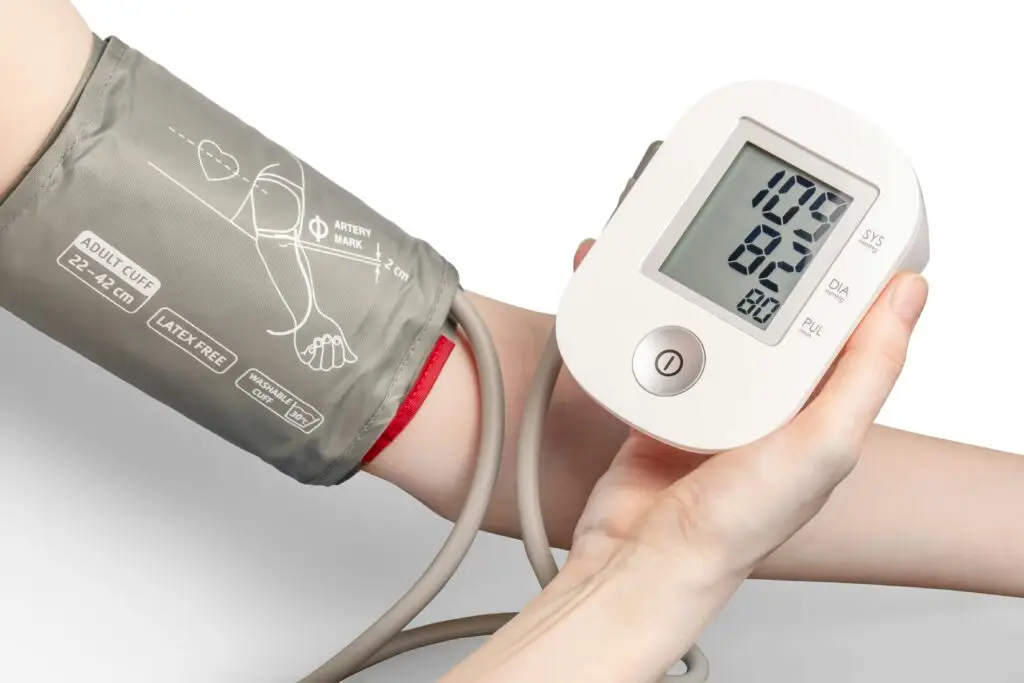
Heart disease, encompassing a spectrum of cardiovascular conditions, continues to pose a formidable threat to global health in 2025. As lifestyles evolve amid rapid urbanization and technological shifts, understanding the risk factors of heart disease and risk factors of cardiovascular disease becomes paramount. Hypertension, often intertwined with these issues, silently erodes vascular integrity, paving the way for catastrophic events like myocardial infarctions or cerebrovascular accidents. This in-depth exploration unpacks the causes of heart disease, symptoms of cardiovascular disease, and actionable prevention strategies, drawing on the latest 2025 insights to empower proactive health management.
What Is Heart Disease?
At its essence, heart disease or cardiovascular disease (CVD) refers to a cluster of ailments disrupting the heart’s pumping efficiency and blood vessel functionality. Central to many forms is atherosclerosis, where lipid-rich plaques accumulate within arterial walls, impeding circulation and fostering clot formation. This cascade can culminate in organ damage, with hypertension amplifying the strain by compelling the heart to exert greater force against resistant vessels.
In the United States, CVD persists as the preeminent killer, claiming 941,652 lives in 2022 alone, the most recent comprehensive data available. This equates to roughly one death every 33 seconds, or about 2,580 fatalities daily, underscoring its dominance as the underlying cause in nearly 1 in 3 overall deaths. Globally, the toll reached 19.41 million in 2021, with projections indicating a 90% surge in prevalence from 2025 to 2050 due to aging demographics, escalating obesity, and diabetes epidemics. Encouragingly, age-adjusted death rates have plummeted 66% since 1970, thanks to advancements in interventions and awareness, yet disparities widen among lower-income groups.
Symptoms of Cardiovascular Disease
The insidious nature of cardiovascular disease lies in its propensity to advance undetected, with many individuals oblivious until a crisis unfolds. Emerging research in 2025 highlights how subtle manifestations, often dismissed as stress or aging, signal underlying vascular strain, particularly in hypertension-driven cases. For instance, persistent symptoms may reflect microvascular damage in organs like the brain or kidneys, emphasizing the need for vigilance.
Key Symptoms
- Chest Discomfort or Angina: A squeezing, heaviness, or burning sensation, often radiating to the arms, neck, or jaw, indicating compromised coronary flow.
- Dyspnea (Shortness of Breath): Labored breathing during minimal exertion or supine positions, stemming from fluid backlog in lungs due to heart inefficiency.
- Cephalalgia (Severe Headaches): Throbbing pains, especially occipital, linked to hypertensive crises impairing cerebral autoregulation.
- Vertigo or Syncope (Dizziness/Fainting): Episodic lightheadedness from transient cerebral hypoperfusion.
- Chronic Lassitude (Fatigue): Overwhelming tiredness disproportionate to activity, as the heart struggles against elevated pressures.
- Epistaxis (Nosebleeds): Recurrent bleeding from fragile nasal vessels under high pressure.
- Visual Disturbances: Blurriness or transient vision loss from retinal vascular damage.
- Hemiparesis or Confusion: Sudden weakness on one side or speech difficulties, heralding stroke, a CVD complication.
Recent studies underscore atypical presentations in women and older adults, such as nausea or back pain, which can delay diagnosis and worsen outcomes.
Causes of Heart Disease
Unraveling the causes of heart disease reveals a tapestry of interdependent elements, where hypertension acts as both a culprit and accelerant. Core mechanisms involve endothelial dysfunction, where vessel linings fail to dilate properly, fostering inflammation and thrombosis. In 2025, research spotlights emerging contributors like environmental toxins and microbiome imbalances, compounding traditional triggers.
Underlying Health Conditions
- Diabetes Mellitus: Chronic hyperglycemia erodes vessel walls, promoting atheroma and hypertension; type 2 diabetes alone accounts for a 2-4 fold CVD risk hike.
- Renal Impairment: Kidney dysfunction disrupts renin-angiotensin balance, elevating pressures and fluid overload.
- Obstructive Sleep Apnea: Nocturnal hypoxia induces sympathetic surges, chronic hypertension, and cardiac remodeling.
Lifestyle Factors
- Dietary Imbalances: Excessive sodium (over 2g daily) and deficient micronutrients like potassium fuel fluid retention and vascular stiffness.
- Sedentarism: Minimal physical activity atrophies cardiac muscle, exacerbating insulin resistance and weight gain.
- Tobacco Exposure: Nicotine constricts vessels while carbon monoxide impairs oxygen delivery, attributing to 480,000 US deaths annually.
- Alcohol Overindulgence: Beyond moderation, it disrupts electrolytes and promotes arrhythmias.
Genetic and Age-Related Influences
- Hereditary Predisposition: Polygenic scores now predict up to 50% lifetime CVD risk based on family patterns.
- Chronological Aging: Arterial elasticity wanes post-50, with menopause accelerating estrogen loss and lipid shifts.
- Ethnic Variations: Higher burdens in certain populations due to gene-environment interactions.
Emerging Environmental and Stress-Related Causes
- Chronic Psychosocial Stress: Cortisol spikes narrow vessels; workplace burnout correlates with 20% higher CVD incidence.
- Ambient Pollution: Particulate matter inflames endothelium, adding 8-10% to urban CVD rates.
- Socioeconomic Barriers: Food deserts and healthcare inequities perpetuate cycles of poor nutrition and untreated hypertension.
Types of Cardiovascular Diseases
CVD manifests diversely, each variant demanding tailored approaches. Advances in imaging and genetics are redefining classifications for precision care.
- Coronary Artery Disease (CAD): Plaque-induced ischemia, leading to 371,506 US deaths in 2022.
- Heart Failure: Progressive pump failure, often hypertension sequelae, affecting 6.7 million Americans.
- Arrhythmias: Electrical anomalies like atrial fibrillation, elevating embolic risks.
- Valvular Disorders: Stenosis or regurgitation impairing flow dynamics.
- Congenital Anomalies: Innate defects, now survivable into adulthood with interventions.
Risk Factors of Heart Disease and Cardiovascular Disease
The risk factors of heart disease and cardiovascular disease (CVD) drive a lifetime risk increase from 5% to over 50% when combined, per 2025 analyses, with high blood pressure, poor diet, and high cholesterol leading projections, and CVD prevalence expected to surge 90% by 2050. Below is a concise breakdown for each risk factor and mitigation strategy for targeted prevention.
Non-Modifiable Risk Factors
Inherent traits shape baseline risk, guiding early screening.
- Age: Risk rises after 55 for men and 65 for women due to arterial stiffening.
- Sex: Men face earlier heart disease onset, while women’s risk spikes post-menopause.
- Genetics: Family history doubles risk, with polygenic scores predicting 50% of lifetime risk.
- Ethnicity: African Americans and South Asians face higher CVD rates due to genetic and environmental factors.
Modifiable Risk Factors
Lifestyle changes can prevent over 50% of cases.
- Hypertension: High blood pressure, affecting half of US adults, drives heart and vascular damage.
- High Cholesterol: Elevated LDL, causing 3.65M global deaths in 2021, fuels atherosclerosis.
- Smoking: Tobacco use, linked to 7.25M deaths in 2021, increases heart attack risk 2-4 times.
- Diabetes: Type 2 diabetes, often obesity-related, doubles heart disease risk.
- Obesity: Affecting 41.8% of US adults, obesity contributes to 1.9M annual CVD deaths.
- Inactivity: Sedentary lifestyles, with only 25.3% of US adults meeting activity guidelines, increase heart strain.
- Poor Diet: High-sodium, low-nutrient diets drive global CVD-related years of life lost.
- Alcohol: Heavy drinking elevates risks of arrhythmias and hypertension.
Emerging Risk Factors (2025)
Modern factors compound traditional risks.
- Poor Sleep: Disrupted sleep promotes arrhythmias and inflammation.
- Stress: Chronic stress and burnout raise CVD risk by 20%.
- Pollution: Air pollution increases urban CVD rates by 8-10%.
- Socioeconomic Gaps: Poverty-driven obesity and untreated hypertension cost $2T annually.
Mitigation Strategies
- Screening: AI wearables and genetic scores enable early risk detection.
- Lifestyle: AHA’s Life’s Essential 8 (diet, exercise, no smoking, BMI <25, sleep, stress control) reduces risk significantly.
- Medical: Statins, antihypertensives, and CRISPR therapies manage cholesterol and blood pressure.
- Policy: Pollution control, food subsidies, and urban exercise infrastructure curb rising CVD rates.
Prevention Strategies for Heart Disease
Prevention pivots on addressing risk factors of heart disease through innovative, evidence-based tactics. 2025 breakthroughs include AI-driven risk stratification and gene therapies.
Lifestyle Modifications
Adopt the LE8 framework: Optimize diet, shun nicotine, exercise 150 minutes weekly, ensure 7-9 hours sleep, maintain BMI <25, control lipids/glucose/blood pressure.
Cutting-Edge Interventions
- Anti-Obesity Pharmacotherapies: GLP-1 agonists reduce CVD events by 20% in trials.
- CRISPR Gene Editing: Targets familial hypercholesterolemia for lifelong cholesterol control.
- AI and Wearables: Predictive algorithms flag arrhythmias early via smartwatches.
Community and Policy Approaches
Advocate for pollution reduction and equitable access to screenings, potentially averting 54.7% DALY increase by 2050.
When to See a Doctor
Prompt evaluation is crucial: Consult if symptoms of cardiovascular disease like chest pressure or dyspnea emerge, or for annual assessments if harboring risk factors of heart disease such as obesity or family history. Post-diagnosis, monitor for escalating signs or medication inefficacy.
Frequently Asked Questions
- What are the main causes of hypertension? Primary drivers include genetic susceptibility, sodium-laden diets, and inactivity; secondary from endocrine or renal issues.
- How does hypertension lead to heart disease? It induces ventricular hypertrophy and endothelial injury, heightening failure and atherosclerosis risks.
- Can lifestyle changes reduce the risk of cardiovascular disease? Absolutely—dietary shifts and exercise can halve modifiable risk factors of cardiovascular disease.
- Is heart disease preventable? Up to 80% of cases via early intervention and habit overhaul.
- What tests diagnose heart disease? EKG, echocardiography, stress testing, and lipid panels for comprehensive assessment.

